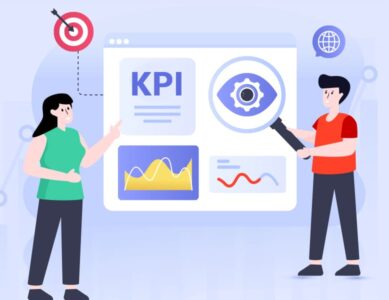A/B testing, also known as split testing, is a crucial practice in the world of marketing and product development. It allows businesses to compare two versions of a webpage, email, or app to determine which one performs better. However, conducting A/B tests is only half the battle; understanding the metrics and key performance indicators (KPIs) to track is equally important. In this blog post, we will explore the 10 essential A/B testing metrics and KPIs that can help you effectively track results and gauge the success of your experiments.
1. Conversion Rate:
Conversion rate is perhaps the most fundamental metric in A/B testing. It measures the percentage of users who take a desired action, such as making a purchase, signing up for a newsletter, or completing a form. By comparing the conversion rates of the control and variant versions, you can determine which one drives more conversions and ultimately yields better results.
Formula
Conversion Rate(CR) = (No. of Conversions/No. of Visitors) * 100
2. Click-Through Rate (CTR):
CTR measures the ratio of users who click on a specific link or call-to-action (CTA) to the total number of users who view the page. It is a valuable metric for assessing the effectiveness of CTAs and determining which version of your content generates more engagement and interest from users.
Formula
Click-Through Rate (CTR) = (No. of Clicks / No. of Impressions) * 100
3. Bounce Rate:
The bounce rate is a metric that reveals the proportion of visitors who leave a webpage without interacting further after viewing just one page.High bounce rates may signify that the content or design of a page is not resonating with users, prompting them to leave without further exploration. A/B testing different elements can help reduce bounce rates and improve overall user engagement.
Formula
Bounce Rate = (No. of Single-Page Sessions / Total No. of Sessions) * 100
4. Average Session Duration:
Average session duration measures the average amount of time users spend on your website or app during a single visit. It provides insights into user engagement and indicates whether visitors find your content compelling enough to stay and explore further. By comparing session durations between variations, you can identify which version retains users for longer periods.
Formula
Average Session Duration(ASD) = Total Duration of All Sessions / Number of Sessions
6. Return on Investment (ROI):
ROI measures the profitability of your A/B testing efforts by comparing the cost of conducting tests to the financial gains achieved through improved conversions or revenue. It helps businesses determine whether the resources invested in experimentation yield positive returns and inform future testing strategies.
Formula
ROI = Net Profit / Investment Cost times * 100
7. Goal Completions:
Goal completions represent the successful achievement of predefined objectives or milestones, such as filling out a contact form, downloading a resource, or subscribing to a service. Tracking goal completions allows you to assess the impact of A/B tests on specific conversion goals and prioritize optimizations accordingly.
Formula
Goal Completions = Number of times the goal is achieved
8. Engagement Metrics:
Engagement metrics encompass a variety of indicators, including likes, shares, comments, and social media interactions. They provide insights into how users interact with your content and brand across different channels. A/B testing can help identify content variations that resonate most with your audience and drive higher levels of engagement.
Formula:
Engagement Metric = (Total Engagements / Total Sessions) * 100
9. User Satisfaction Scores:
User satisfaction scores, such as Net Promoter Score (NPS) or Customer Satisfaction (CSAT), measure the overall satisfaction and loyalty of customers towards your brand or product. Integrating satisfaction surveys into A/B testing allows you to gather qualitative feedback and assess the impact of changes on user sentiment and loyalty.
Formula for User Satisfaction Scores:
User Satisfaction Score = (Number of Positive Responses / Total Number of Responses) * 100
10. Statistical Significance:
Statistical significance is a critical concept in A/B testing that determines whether differences observed between variations are due to chance or represent true differences in performance. By calculating confidence intervals and p-values, you can ensure that the results of your tests are reliable and actionable.
Formula:
Calculate using statistical significance calculators or tools.
Build Your A/B Test with architCX
In conclusion, tracking A/B testing metrics and KPIs is crucial for evaluating the effectiveness of marketing strategies and optimizing user experiences. By analyzing above mentioned key metrics, businesses can make data-driven decisions to improve their digital initiatives. With architCX CRM services, companies gain access to comprehensive analytics and insights, enabling them to identify areas for improvement and enhance customer satisfaction. By leveraging these essential metrics and partnering with us, businesses can achieve greater success in their A/B testing efforts and drive meaningful results across their digital platforms. Get in touch with us for more details.


